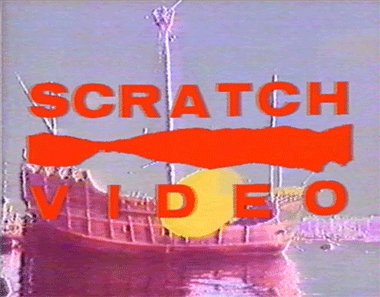
It's been said that necessity is the mother of all invention. That is, that true innovators were often responding to a lack of materials in crafting their art. This seems particularly true in the field of filmic media, where art history offers us so many examples, ranging from the Soviet KINO school's use of rearranged bits of paper to fine-tune the practice of montage to Britain's early-80s Scratch Video movement. The latter is the subject of an exhibition at London's Seventeen Gallery, May 28th-June 28th. "SCRATCH" presents work by intimate colleagues George Barber, The Duvet Brothers, Goldbacher & Flitcroft, and Gorilla Tapes, each of whom participated in this movement that involved sourcing material directly from existing broadcasts and other moving images sources, and often reprocessing them with what were then the latest in video editing techniques and tools. While all of the these artists' work responds largely to the new creative possibilities afforded by the birth of the VCR, Seventeen points out that they took this work in two distinct directions: politics and aesthetics. (Not that the two are mutually exclusive!) The Duvet Brothers and Gorilla Tapes directly engaged the Thatcher/Reagan new world order of conservativism and the ongoing issues in Northern Ireland with an anti-establishment ethos that marked all of their works. Their peers in the show explored visual styles ranging from dreams to pop music videos, imbuing their sources with rhythm, pulse, and a new life. If you're in the area, come check-out this often under-recognized work whose copious imitators, in the last two decades, are a testament to its influence and staying power. - Marisa Olson

